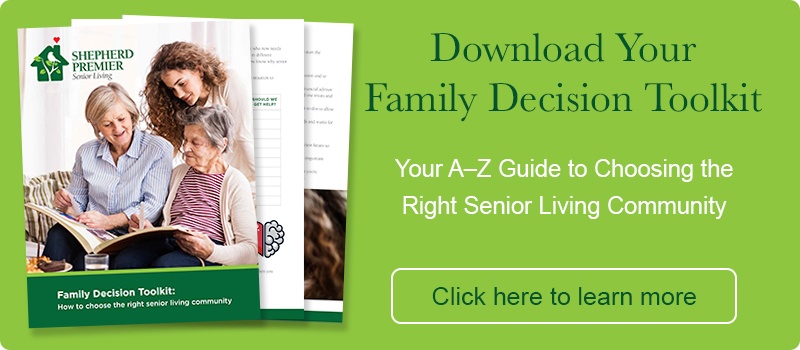You’ve determined a budget and you’ve determined that senior living is the right fit for your loved one, but what if there’s a gap between what you can pay and the cost of the community? Don’t worry, it doesn’t necessarily mean you’re out of luck. There are actually a number of options to offset the cost of senior living so your budget can go further. Here are some of the most common.
Veterans Aid & Attendance Benefit
Wartime veterans or their surviving spouse may be eligible to receive this non-service-connected benefit to help pay for care in senior living. The benefit starts with the basic pension and, depending on medical need, gives your loved one a rating which could add more money to their monthly pension. But your loved one must meet the military service criteria as well as the medical requirement AND the financial requirement to qualify.
To apply, send a completed VA form to the Pension Management Center (PMC) that serves your state. You may also visit your local regional benefit office to file your request.
Long-Term Care (LTC) Insurance
LTC insurance can help your loved one pay for the cost of senior living by covering care services typically not covered by health insurance, Medicare or Medicaid.
Many LTC policies begin to pay benefits after an assessment has determined that your loved one needs help with two or more Activities of Daily Living or has cognitive impairments (known as a benefit trigger). The insurance company will approve a Plan of Care. Then there will be an elimination period, typically 30, 60 or 90 days after the benefit trigger occurs before payments will be received. During this time your loved one covers the cost of services they receive out of pocket. Also, keep in mind that policies may only pay up to a pre-set daily limit until the lifetime max is reached.
Life Insurance Conversion
You may not realize that anyone with an in-force life insurance policy can transform it into a pre-funded financial account that disburses a monthly benefit to help pay for care needs in senior living. Unlike life insurance, this account is a Medicaid qualified asset.
The conversion process simply transfers ownership of a life insurance policy from the original holder to an entity that acts as a benefits administrator. Because the original owner no longer holds the policy, it won’t count against your loved one in the Medicaid spend-down process.
The benefits administrator then assumes all responsibility for paying the monthly premiums on the policy to the insurance company and agrees to pay the previous policy holder (your loved one) a series of monthly payments based on the value of their policy. There are no application fees to apply for a life insurance conversion and the typical enrollment time is 30-45 days. Once converted, the benefits payments should start immediately.
Reverse Mortgage
Essentially, this is a type of home equity loan that’s specifically for homeowners 62 or older. It may make sense if your loved one wants to access the equity in their home to supplement income to pay for senior living. Beyond age, if your loved one owns their home or has a small mortgage and the home meets FHA property standards as well as flood requirements, they may be eligible.
Here’s how it works. The lender makes payments to the borrower based on a percentage of your loved one’s accumulated home equity. That money can then be used to pay for senior living. Keep in mind, the loan will need to be repaid when the borrower dies, sells the home or permanently moves out.
Supporting the Journey to Senior Living
You can always talk to us! We’re here to support you and your loved one through each step in this journey and would be happy to answer any questions you have.

For more information download our Family Decision Toolkit or call (224) 333-6247 to speak to a team member.



